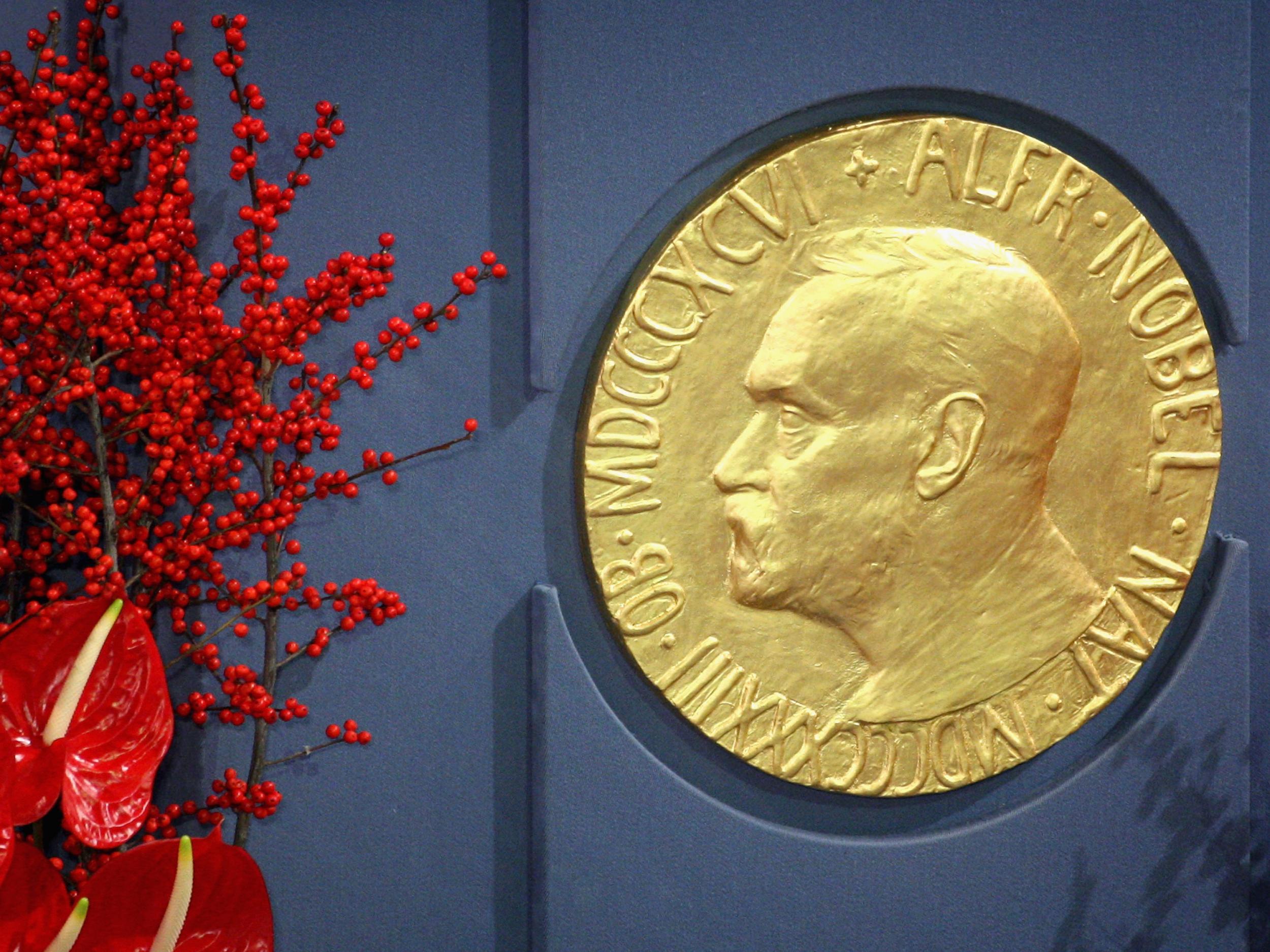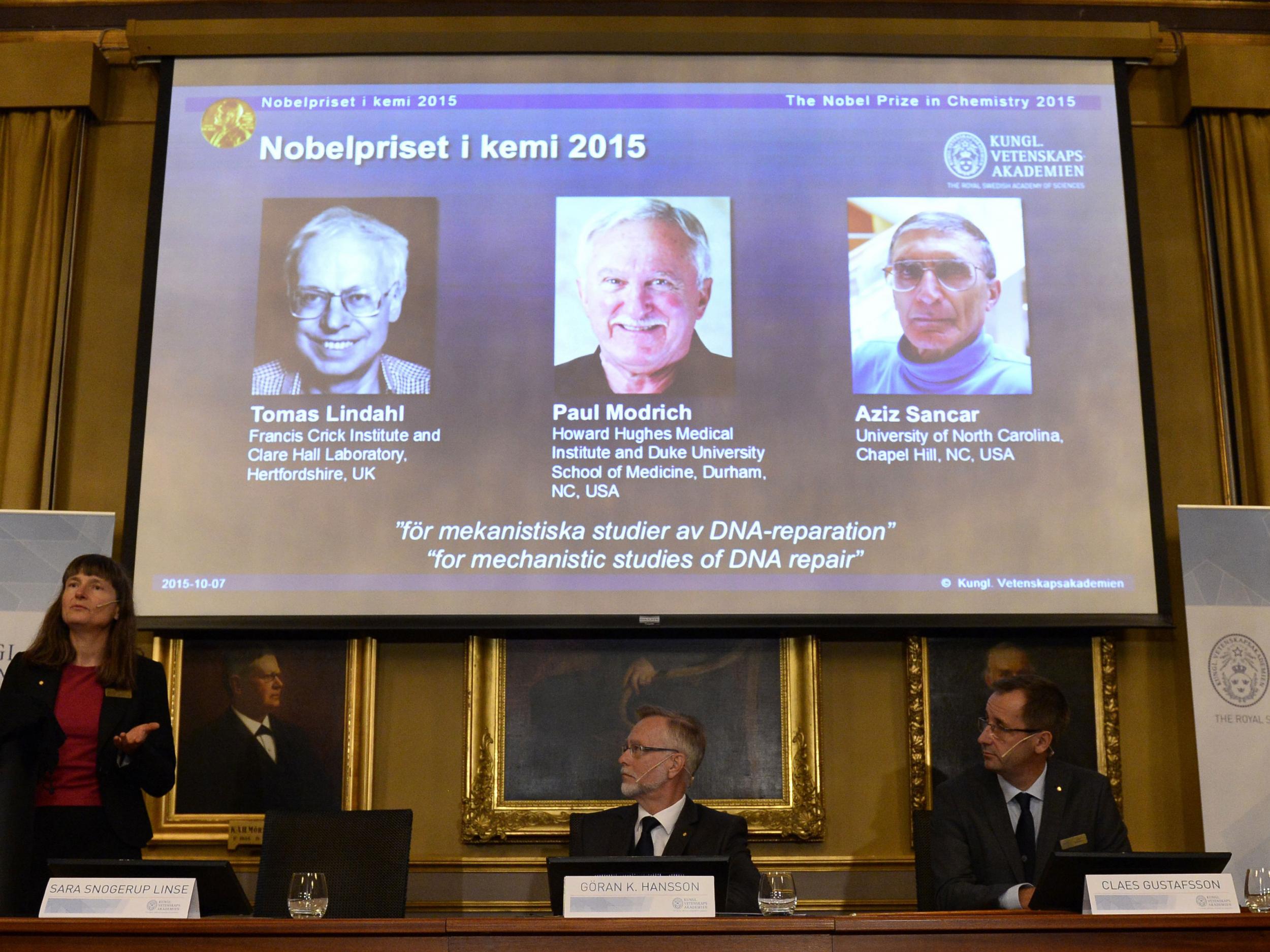Nobel Prize in Chemistry 2015: Tomas Lindahl, Paul Modrich and Aziz Sancar win for finding how DNA is repaired
DNA is under constant attack from the environment — and the three winners get the prize for mapping and explaining how cells manage to keep it sheltered

The Nobel Prize in Chemistry has been given to a trio of scientists who discovered why our DNA is not being continually plunged into “chemical chaos”.
Tomas Lindahl, Paul Modrich and Aziz Sancar together won the award for their work on DNA, which mapped and explained how cells repair it and keep the genetic information around. The work “provided fundamental knowledge of how a living cell functions and is, for instance, used for the development of new cancer treatments”, the Nobel committee said.
DNA contains the genetic information that controls how human beings are shaped and allows them to grow. It is under constant assault from its environment — but mechanisms in cells allow it to remain intact, and it is work on those mechanisms that the three winners were recognised for.
In their announcement, the committee described how Lindahl “demonstrated that DNA decays at a rate that ought to have made the development of life on Earth impossible”. “This insight led him to discover a molecular machinery, base excision repair, which constantly counteracts the collapse of our DNA.”

Sancar was recognised for his work on “nucleotide excision repair, the mechanism that cells use to repair UV damage to DNA”. That has helped with the treatment of skin cancer, since people born with defects in that repair system will develop skin cancer from being exposed to sunlight. “The cell also utilises nucleotide excision repair to correct defects caused by mutagenic substances, among other things,” the committee wrote.
Modrich’s work demonstrated how the cells correct errors that occur while DNA is being replicated. “This mechanism, mismatch repair, reduces the error frequency during DNA replication by about a thousandfold,” the committee wrote. “Congenital defects in mismatch repair are known, for example, to cause a hereditary variant of colon cancer.”
The three men will together share the prize, which is worth around $1 million.
Join our commenting forum
Join thought-provoking conversations, follow other Independent readers and see their replies
Comments